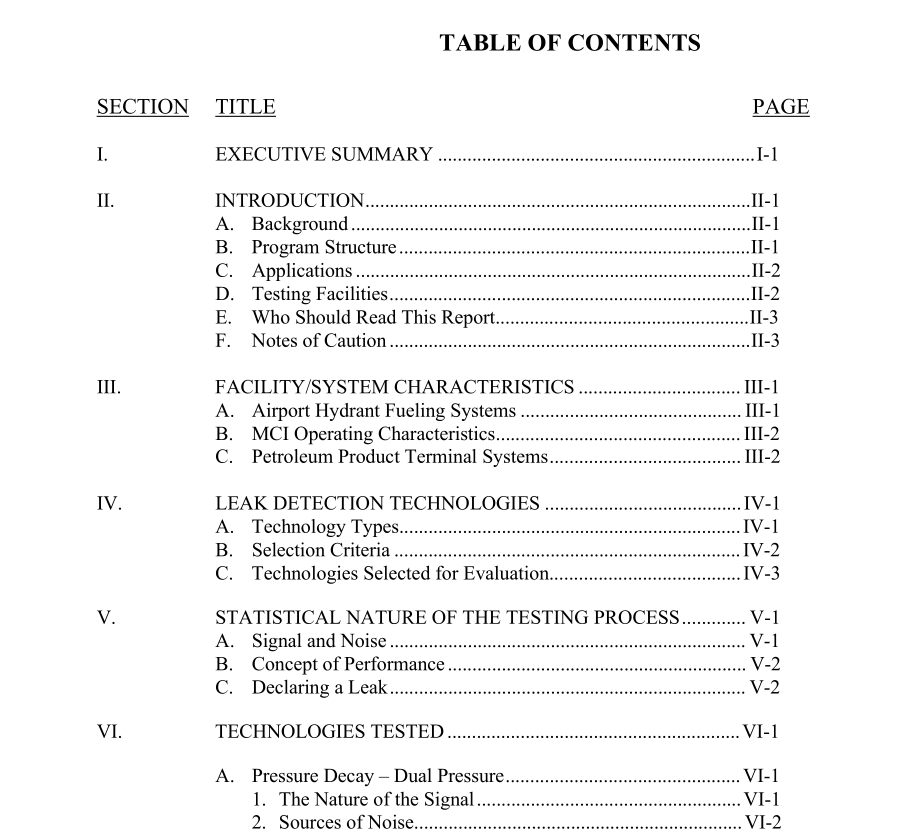API Publ 4716 pdf download

API Publ 4716 pdf download.Buried Pressurized Piping Systems Leak Detection Guide
I. EXECUTIVE SUMMARY
This Study Documentation Report (the Study) analyzes of the performance of different types of leak detection technologies that were applied to buried pressurized piping systems used in airport hydrant fueling and petroleum product terminals. The Study was conducted by Argus Consulting and Ken Wilcox Associates on behalf of the Air Transport Association of America (ATA) and the American Petroleum Institute (API). This report is intended to provide an overview of the Study methodology and results. The purpose of the Study, as defined by the joint API and ATA Leak Detection Committee, was to Òidentify and evaluate reliable leak detection technologies that are currently commercially available and cost-effective for buried piping associated with airport hydrant fueling systems and petroleum product terminals.Ó The Study was conducted in three phases. In Phase I, the Study consultants collected published data and vendor information regarding the leak detection technologies reported to be applicable to the buried, pressurized piping in airport hydrant fueling systems and petroleum product terminals. During that phase, criteria were identified for evaluating the leak detection technologies in the specified applications. Through application of those criteria, six types of leak detection technologies were determined to have the potential to satisfy the Study purpose. One vendor of each of these technologies was selected and agreed to participate in Phase II of the Study, which consisted of actual testing under conditions intended to represent or approximate conditions at an airport hydrant fueling system or petroleum product terminal.Testing of the various technologies addressed in Phase II of the Study was conducted at either the Kansas City International Airport (MCI) or a special test facility designed and maintained by Ken Wilcox Associates. The factors considered in evaluating the potential of these technologies included, but were not limited to: applicability to buried piping at airport hydrant fueling systems and petroleum product terminals; compatibility with the operating requirements for such systems and facilities; performance of the technology; installation procedures; operational requirements; reliability, and cost.
Previous applications of the technology have used a minimum test pressure of 100 psi, which would limit its applicability for petroleum product terminals. Conversations with the vendor indicate that the technology can be used on lower pressure lines, but there is little experience with that application. The technology requires that any trapped air in the lines be eliminated, and surge suppressors be isolated from the lines, during the test. Elevation differences in the line can affect the results. There is no effect if the leak is at the same elevation as the pressure measurement. The reported result will be biased high if the leak is above the test point, and biased low if the leak is below the test point. The effect would be about 10 percent for a 50-ft elevation change. Reported rates are standardized to 10 bar (150 psi). Since most of the testing is conducted at night, the effects of exposed pipeline are minimized. ¥ VolumetricÑdual pressure. This technology is designed for permanent installation but can also be employed as a mobile unit where the vendor can conduct a leak detection test on demand. When permanently installed, it is often set up to block in and test the entire line. Unless there is special provision for switching the leak detection unit to different sections of the line by valves, separate fixed units are required for each section. Alternatively, a mobile unit can be utilized to test individual segments of the piping system on a scheduled basis. This leak detection technology tests the line in a static condition and controls the pressure to two different levels during the test by adding or removing a volume of liquid product from the line. The test can take two to three hours, depending on the size of the line being tested. This technology appears capable of detecting a leak of about 0.006 percent of the capacity of the line with a 99 percent probability of detection and with a false alarm rate of about one percent.









